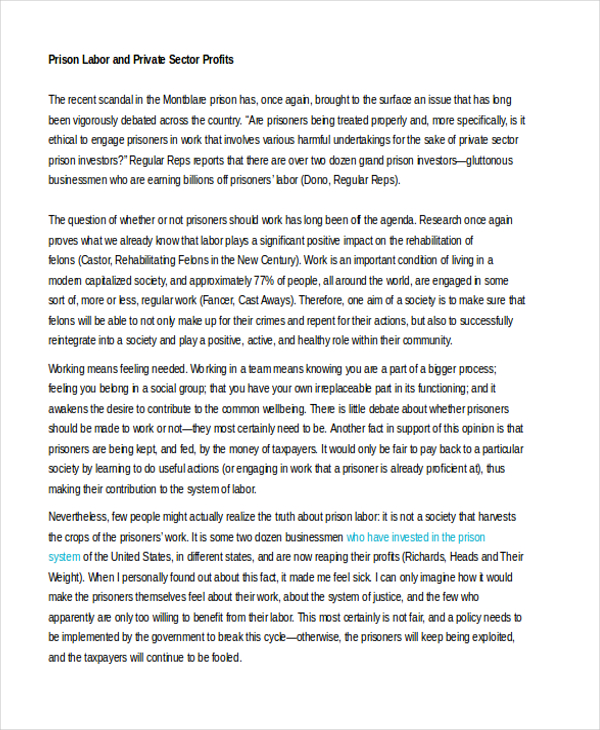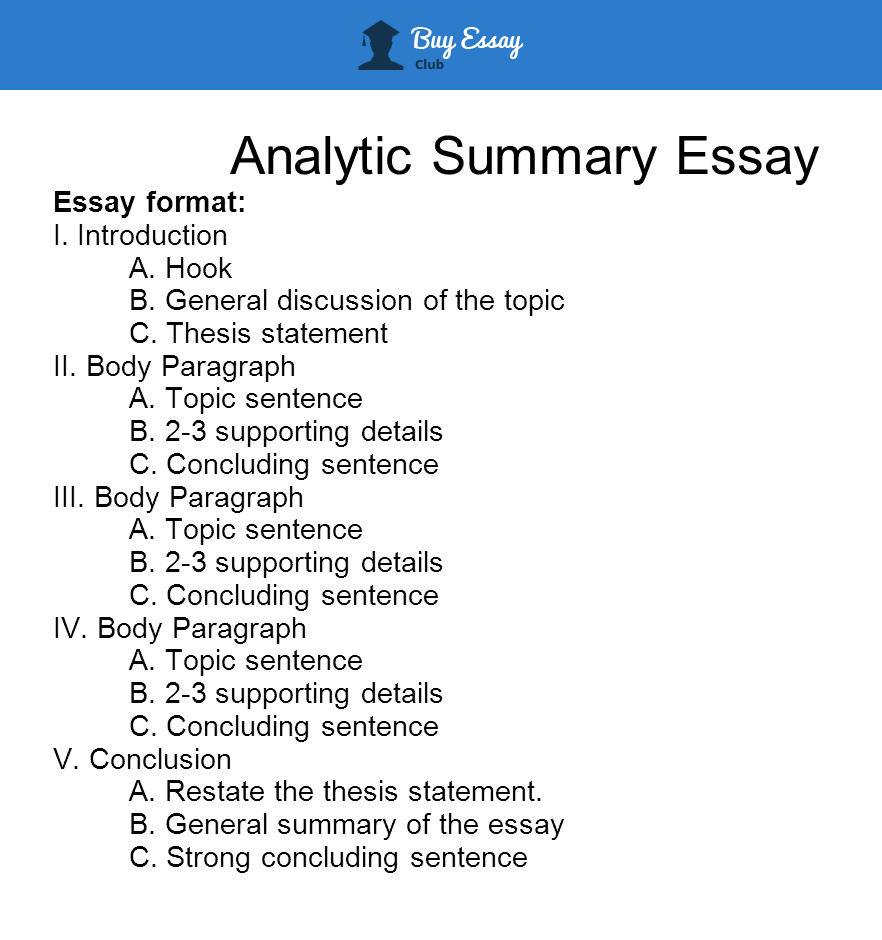
Feb 04, · How to write an essay introduction. Step 1: Hook your reader. Your first sentence sets the tone for the whole essay, so spend some time on writing an effective hook. Step 2: Give background information. Step 3: Present your thesis statement. Step 4: Map your essay’s structure. Step 5: Check and Apr 17, · A paragraph in a literary analysis essay should be between eight and 12 sentences long. In the introduction, write three to four sentences generally describing the topic of your paper and explaining why it is interesting and important to the book you read. These three or four sentences will make up the bulk of your introductory paragraph Write Your Analytical Essay: a Few Simple Steps. After you’ve chosen a topic, take your time and brainstorm. You have to determine your thesis statement, because it’s the basis of the entire essay. Write your thesis statement. It can be a couple sentences long. This idea must summarize all your
Writing An Analytical Essay - How to Write an Analytical Essay Outline | AccessEssay
The introduction is the first thing your reader will encounter in your literary analysis essay, so it's essential that you write clearly and concisely. Literary analysis requires the writer to carefully follow a theme, motif, character development or stylistic element and examine its importance within the context of the book. Because literary analysis depends on the writer's interpretation of the text, it's often necessary to convince the reader of your point of view.
Writing a strong introduction to your essay will help launch your reader into your main points. Begin writing the introduction after you have completed your literary analysis essay. This may seem counter-intuitive, but once you have finished enumerating and explaining your main points, you'll be better able to identify what they share in common, which you can introduce in the first paragraph of your essay.
You can also begin writing the introduction after completing your in-depth outline of the essay, where you lay out your main points and organize your paper before you begin writing. Start your introduction with a grabber. In a literary analysis essay, an effective grabber can be a short quote from the text you're analyzing that encapsulates some aspect of your interpretation. Other good grabbers are quotes from the book's author regarding your paper's topic or another aspect how to write a introduction for an analytical essay to the text and how you interpreted it.
Place the quote in quotation marks as the first sentence of the introductory paragraph. Your next sentence should identify the speaker and context of the quotation, as well as briefly describing how the quote relates to your literary analysis.
Keep the body of your introduction relatively short. A paragraph in a literary how to write a introduction for an analytical essay essay should be between eight and 12 sentences long. In the introduction, write three to four sentences generally describing the topic of your paper and explaining why it is interesting and important to the book you read.
These three or four sentences will make up the bulk of your introductory paragraph. Use these sentences to sketch the main points that you describe in greater detail in the body of your essay. Finish your introductory paragraph with your thesis statement.
The thesis statement clearly states the main point of your paper as a whole. It can be one sentence long or span two sentences, but it should always be the very last part of the introductory paragraph.
For a five-paragraph essay with three body paragraphs, write one sentence identifying your paper's main point. In the second sentence, called the blueprint, identify the three main topics of each body paragraph and how they support your thesis. For more advanced literary analysis essays, it's not always necessary to enumerate explicitly the main point of each body paragraph as part of your thesis statement. Focus instead on clearly and concisely stating the driving force behind your paper's organization and development.
Goody Clairenstein has been a writer since She has sat on the editorial board of several non-academic journals and writes about creative writing, editing and languages. She has worked in professional publishing and news reporting in print and broadcast journalism, how to write a introduction for an analytical essay.
Her poems have appeared in "Small Craft Warnings. How to Write a Thesis Paragraph. How to Write an Analytical Exposition Essay. How to Write a Research Paper Introduction. How to Write an Introduction for a Reflection Paper. How to Make a Strong Introduction for a Literary Analysis Essay. Goody Clairenstein Updated April 17, Home » The Rewrite, how to write a introduction for an analytical essay. Things Needed. About the Author.
Photo Credits.
How To Write An Analytical Essay: What Is It?
, time: 5:24How to Write an Analytical Essay: Step-By-Step Guide

Apr 17, · A paragraph in a literary analysis essay should be between eight and 12 sentences long. In the introduction, write three to four sentences generally describing the topic of your paper and explaining why it is interesting and important to the book you read. These three or four sentences will make up the bulk of your introductory paragraph Feb 04, · How to write an essay introduction. Step 1: Hook your reader. Your first sentence sets the tone for the whole essay, so spend some time on writing an effective hook. Step 2: Give background information. Step 3: Present your thesis statement. Step 4: Map your essay’s structure. Step 5: Check and 5 Steps for Writing an Analytical Essay #1: Pick a Topic. You may have already had a topic assigned to you, and if that’s the case, you can skip this step. #2: Write a Thesis Statement. Your thesis statement is the most important sentence of your essay; a reader should be #3: Do Research to Find
No comments:
Post a Comment